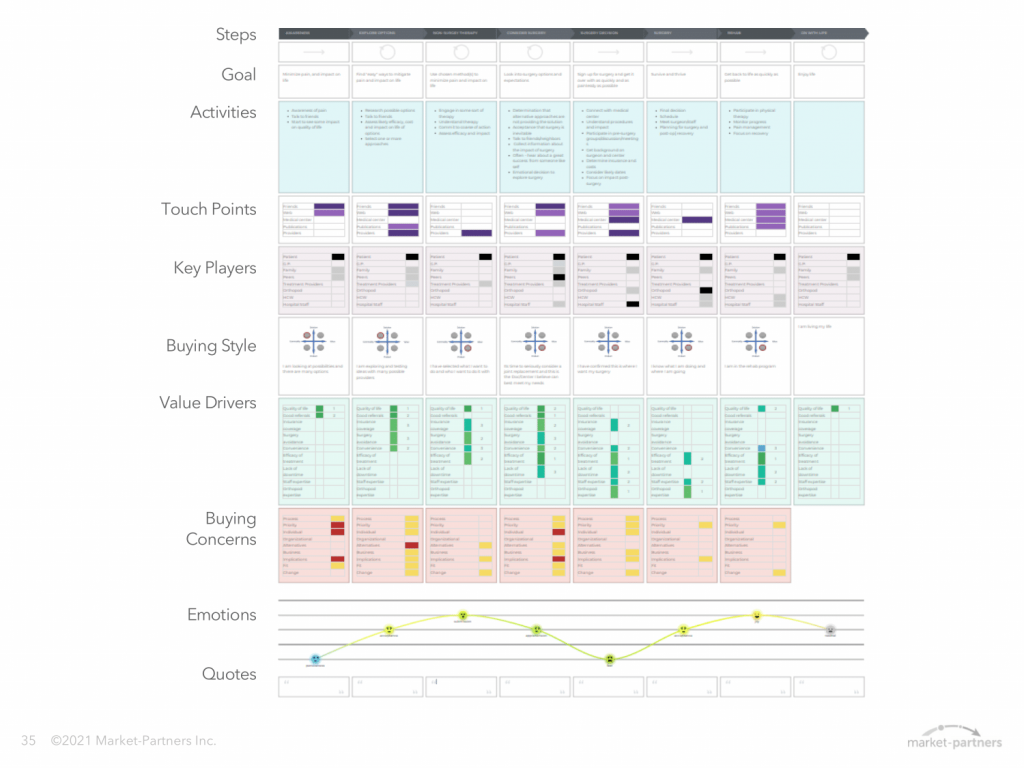If you are as passionate about journey mapping as we are, then buckle up. Our new guest is Martyn Lewis, Founder and CEO of Market-Partners Inc., who has over 20 years of experience in customer buying journey mapping across a broad spectrum of industries from B2B to B2C. Martyn has translated his knowledge gained during conducting 2,500+ interviews with buyers and mapping 150+ customer journeys into a best-selling book “How Customers Buy...And Why They Don’t” (that we highly recommend).
Today’s agenda is the buying journey — how to map and manage it and why we should worry about it in the first place. You can read the article below or watch the recording at its end.
Contents
Why worry about the buying journey?
If we take a look at the history, we'll see that the buying process has significantly evolved from being a simple transaction between two people (1st generation) to more complex operations with multiple options (2nd generation) to practically unlimited choice and multi-party transactions (3rd generation).
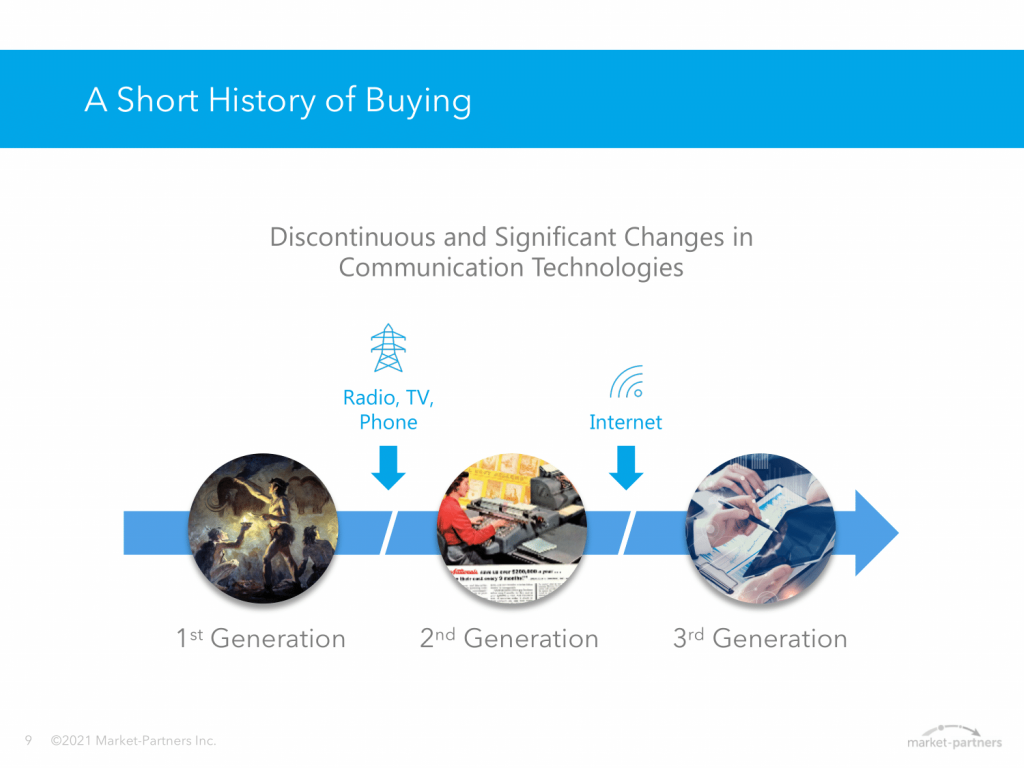
As the connection between selling and buying became less tight, there appeared a significant gap between how we sell and how customers buy. Market-Partners’ research has shown that sales and marketing are usually engaged in less than 10% of the entire buying journey.
See the diagram below for other interesting findings.
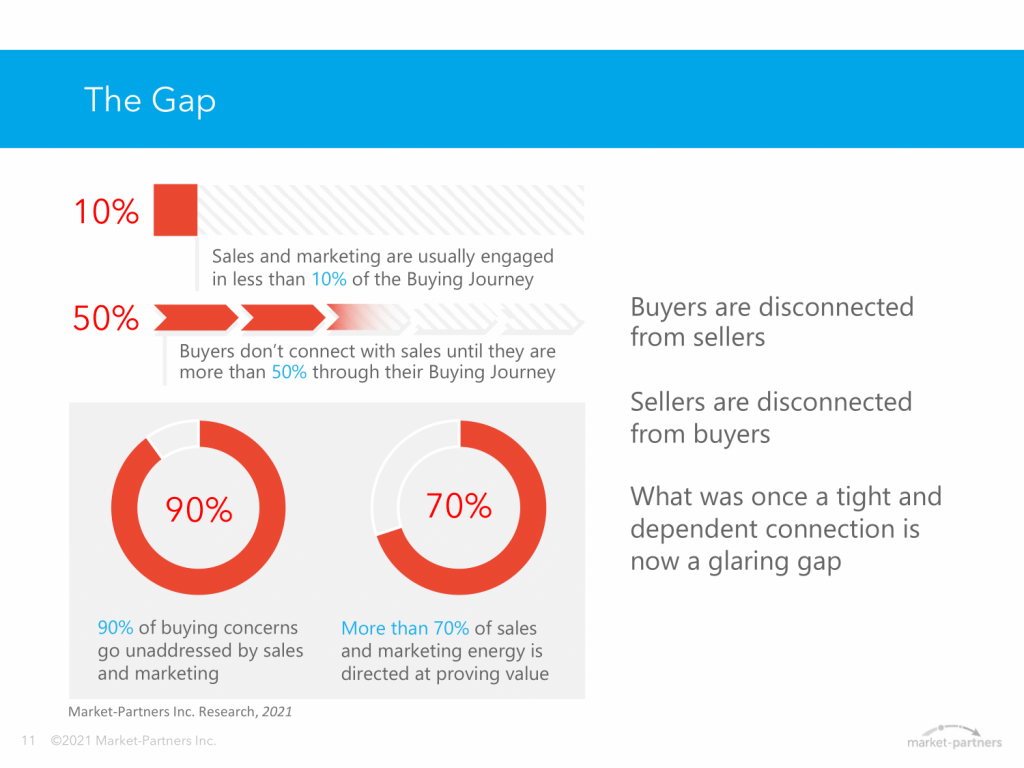
To address this gap, you need to develop a deep understanding of a market's buying journey in order to build and maintain relevance across it. Otherwise, you risk becoming a supplier at will. In other words, it's the will of the customer to do business with you, and you are not influencing the decision.
It's not about a sales process or the offering, it’s about how the customer is going to buy. We need to shift the focus from trying to take customers through a sales process to supporting and navigating them throughout their entire buying journey while positively impacting it.
That is the new role for sales and marketing. We need to do things that will increase the chances that customers will buy from us and tell others about us. And that is the heart of why we should worry about the buying journey.
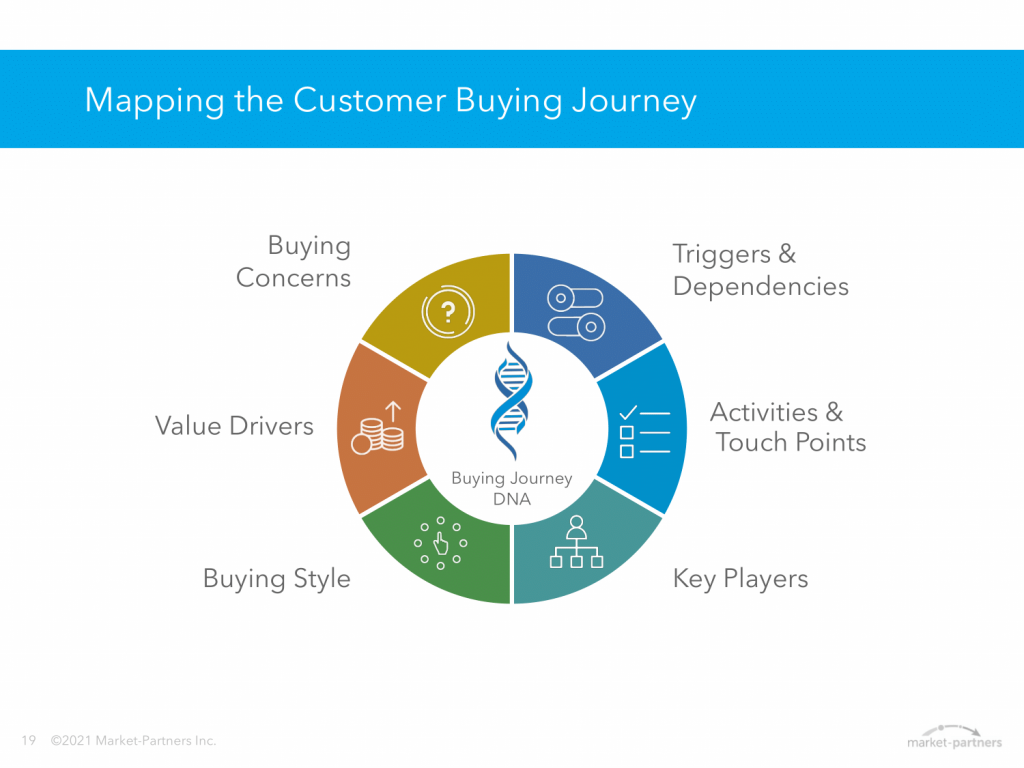
How do we map buying journeys?
After about 1,500 buyer interviews, we discovered that customers within a specific market buy in remarkably similar ways — they have the same reasons and are concerned about the same things.
If we find that people are buying in different ways, we consider them different markets. For instance, not all people that buy cars are the same market. If you're out to buy a Ferrari or you're out to buy a Honda SUV, you're in different markets as you're going to value different things.
So, if buyers in a market buy in a similar way, we can decode the customer buying journey DNA and then predict it and manage it.
- Triggers and dependencies
What causes a customer to move off the dime in the first place? What experience, activity, or event has started them down a buying journey? And what people, conditions, or resources must be in place for the buying journey to start successfully?
- Activities and touchpoints
What are the major activities that customers get involved in? When do they reach out to others to get information, discover something about a supplier or a product?
- Key players and personas
Who gets involved and when? As different people come in and out of the buying journey, what role do they play? What's their agenda, motivation, and concerns?
- Buying style
This is profoundly important and yet so simple. It's deciding what to buy and where.
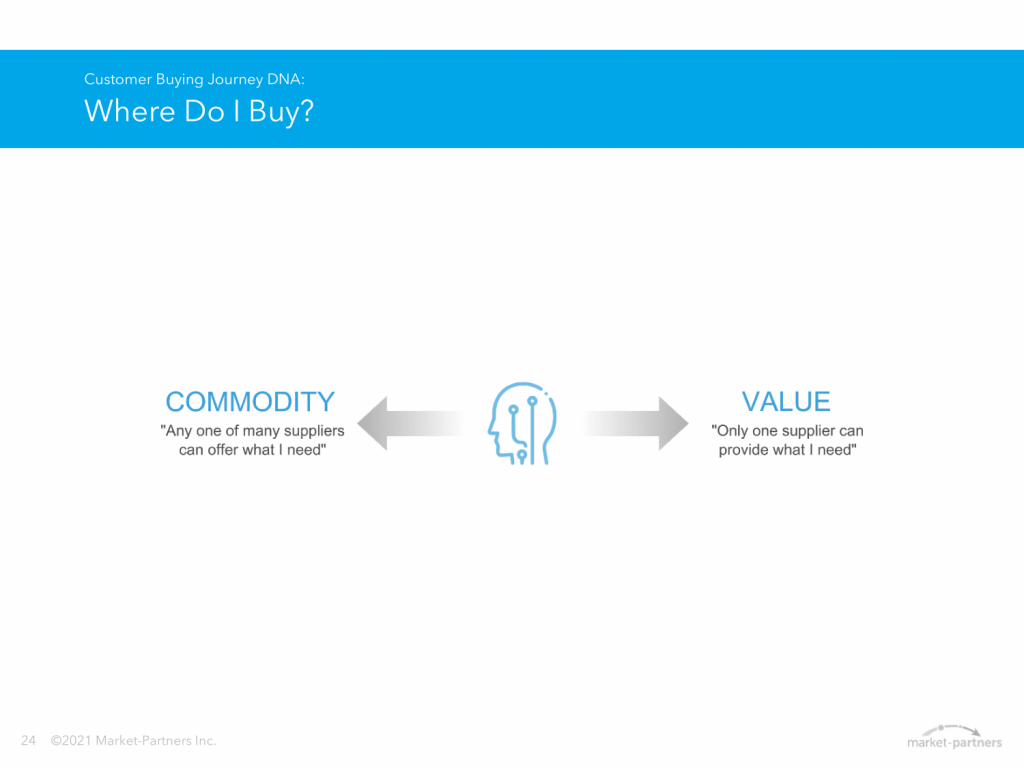
This question is polarized on the left (commodity) and the right (value) with nothing in between. On the left, buyers believe they have a choice — they don’t really care whether they buy A, B, or C or whether they buy from X, Y, or Z. On the right side, it’s the opposite. There is a certain value to going to the same supplier or buying the same product again — some people choose to buy only BMWs or Hondas.
The second question is — what do I buy? Polarization here goes from the bottom (product) to the top (solution). The product means that buyers know what they want. The solution applies to situations when buyers have a problem or a pain and need help. They need somebody more experienced to consult with.
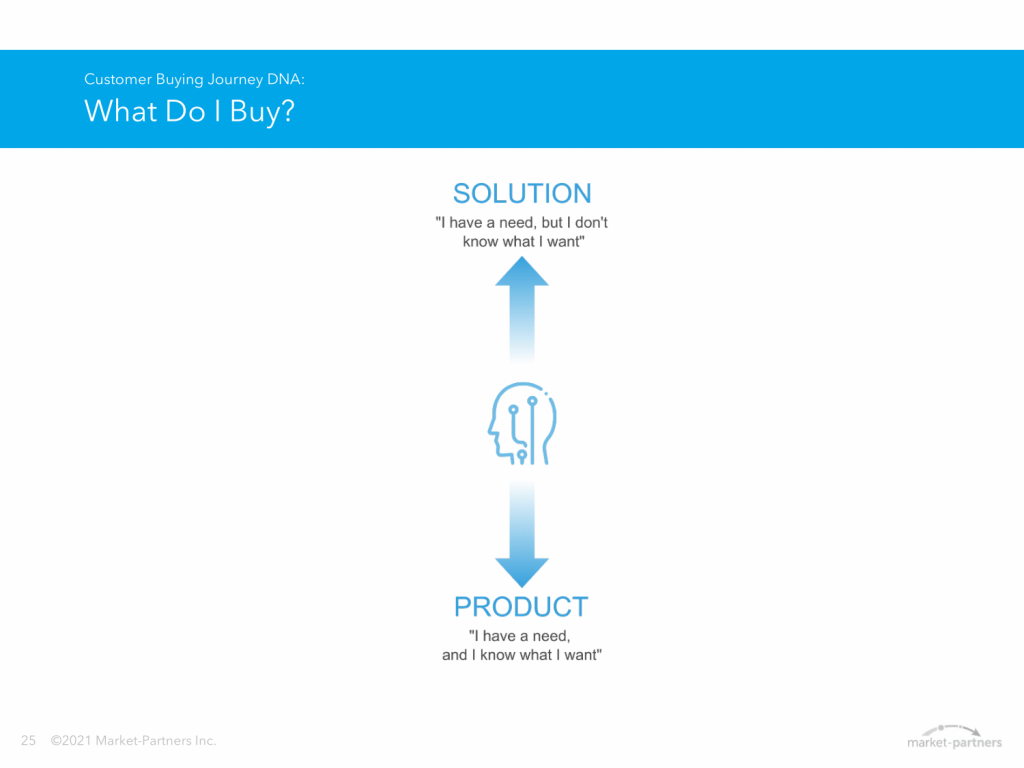
By putting these two approaches together, we'll see that there are four quadrants of buying style. These quadrants have a profound impact on how you go to market because if your buyers are in one of the quadrants, you’ll have to harmonize with that style of buying.
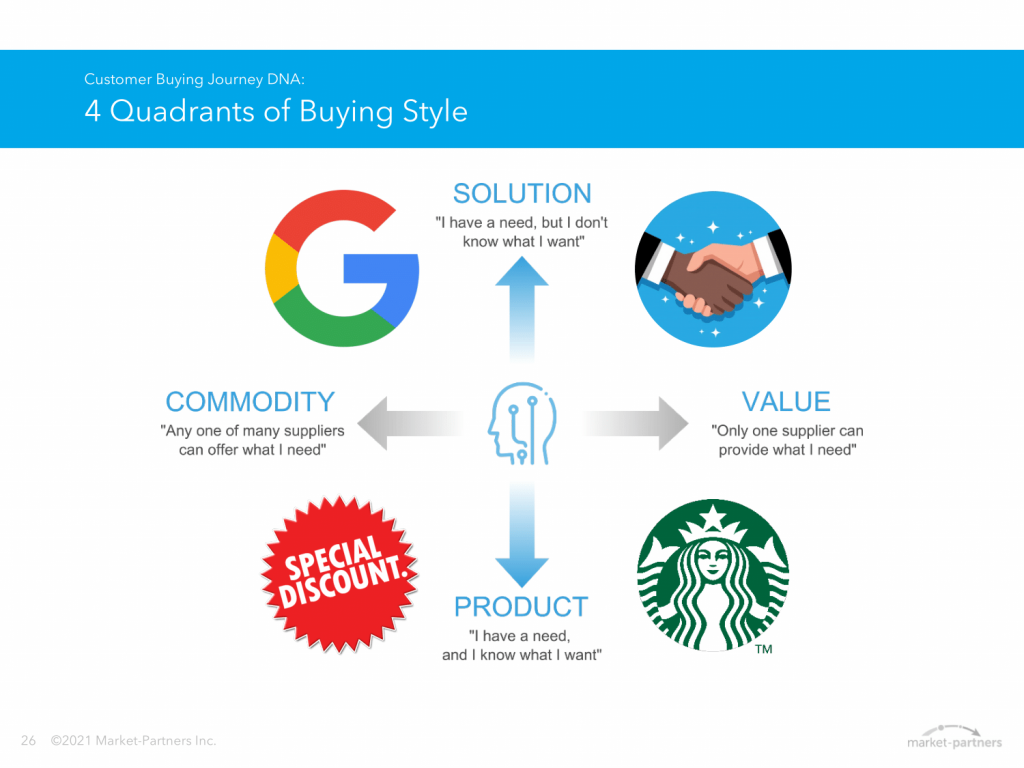
- Special discount. These are the shoppers who know what they want and they have a choice. They are looking around to see who's got the product at what price, with which features, etc.
- Trusted advisors. These are the buyers looking for help, but to get help they will go to the same company again and again.
- Google. These buyers want help, but they have a choice. For instance, if you have won a lottery, you’ll probably want to talk to a tax accountant about investing money. So, you google who is available and can meet with you.
- Starbucks. These people know what they want and they will go to a particular supplier or buy a particular product again and again. For example, they want coffee and they are willing to go past McDonald's and many other delis because they want to go to Starbucks.
The truth is that no brand can be successful by selling to buyers in more than one of these quadrants. You need to pick one of those and harmonize what you do to that particular type of buyer.
- Value drivers
Value drivers are what motivates people. What do they want as a result of their buying journey? What are they looking for? And what do they want from a supplier?
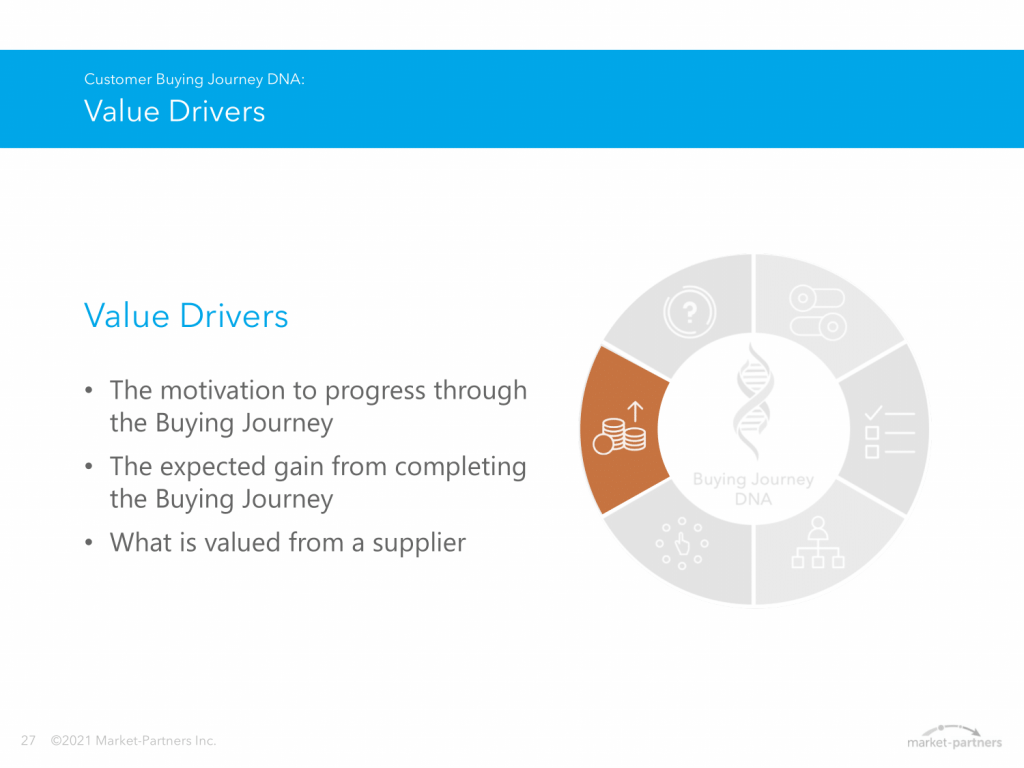
- Buying concerns
The most overlooked and yet the most important question is why customers don't buy. Buyers know what drives them and the reasons why they should buy. It is the buying concerns where they get hung up.
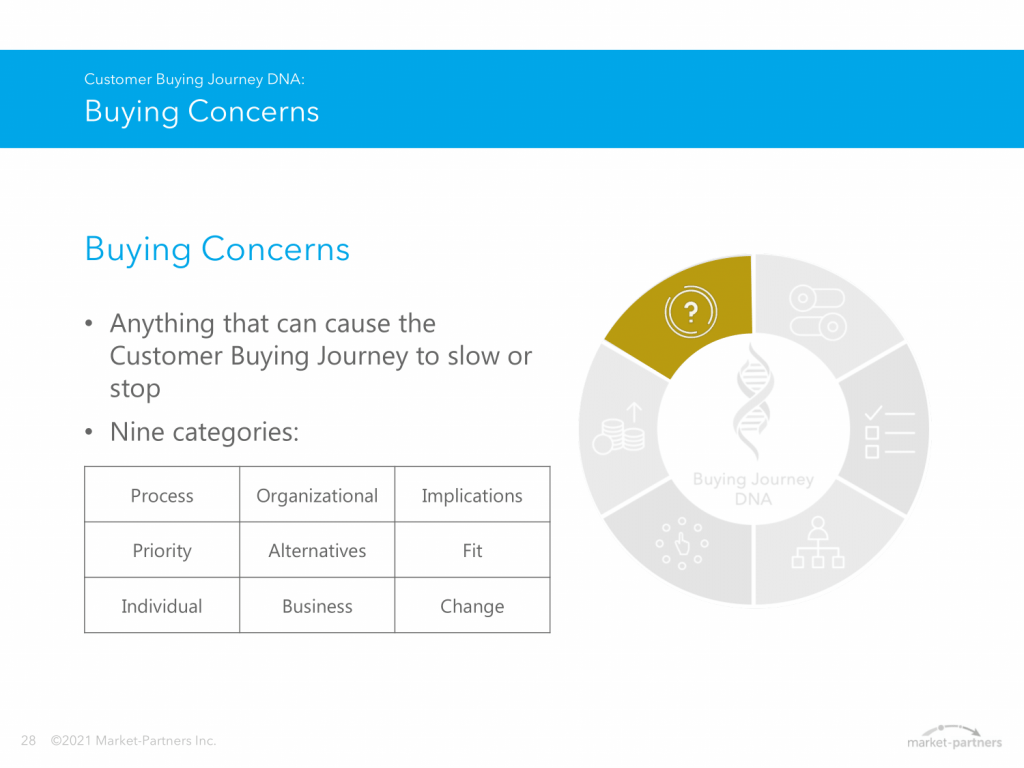
Seven best practices of buying journey mapping
- Talking to customers
It’s simply impossible to successfully map the buying journey without talking to customers first. Start by intimately understanding what customers do. To do that, ask them to tell a story — what happened first, how they made a decision, who else was involved. And if you listen carefully, you’ll get the gold.
- Including a broad spectrum of customers
Prospects, customers, good customers, complaining customers, and even those who have stopped doing business with you — talk to a wide spectrum of customers, not just the ones who are friendly.
- Having one-on-one interviews
Individual interviews can yield better results than focus groups. In focus groups, somebody will say something, and everybody will agree with them, so there will be strange group dynamics. 1-on-1 confidential interviews will help you get deeper insights.
- Doing detective work
Journey mapping is all about listening to the story of what goes on. For better results, you can use behavioral event interview techniques to get interviewees to relive an experience. Ask them to tell what happened next, who got involved, how they made the decision, etc.
- Asking high-level non-leading questions
The problem with journey map validation is that these questions are not high-level and leading. Here are some of the right questions to ask: Could you just share with me what happened? Why did you start thinking about buying this? Were there other people involved?
- Starting as tabula rasa
Always start with a clean slate. You don’t want to bring into the process your thoughts of how customers buy because that will lead to a myopic view and you’ll miss important insights.
- Waiting for the repetition
When you've talked to 20 customers and 18 have told you the same thing, you can map that in a journey. But if there are significant discrepancies in the answers, it often means you've got more than one market and you can start to coalesce those into groups.
Knowing best practices is good, even better is knowing potential mistakes so you can avoid them.
Three fatal mistakes
- Not talking and listening to customers
If you map a buying journey with what you imagine a customer does, you are going down the wrong road and you risk missing really important things.
- Not mapping the buying journey from end to end
It is critically important to identify the actual start of the journey because it sets how people go through it. And since you may be involved only in part of it, you need to understand what triggered it, where they're coming from. The same goes for the end of the journey.
- Trying to align to an internal process
Don't try to align the buying journey to your existing sales or marketing process. There is only one process that creates a customer and generates revenue — the buying process.
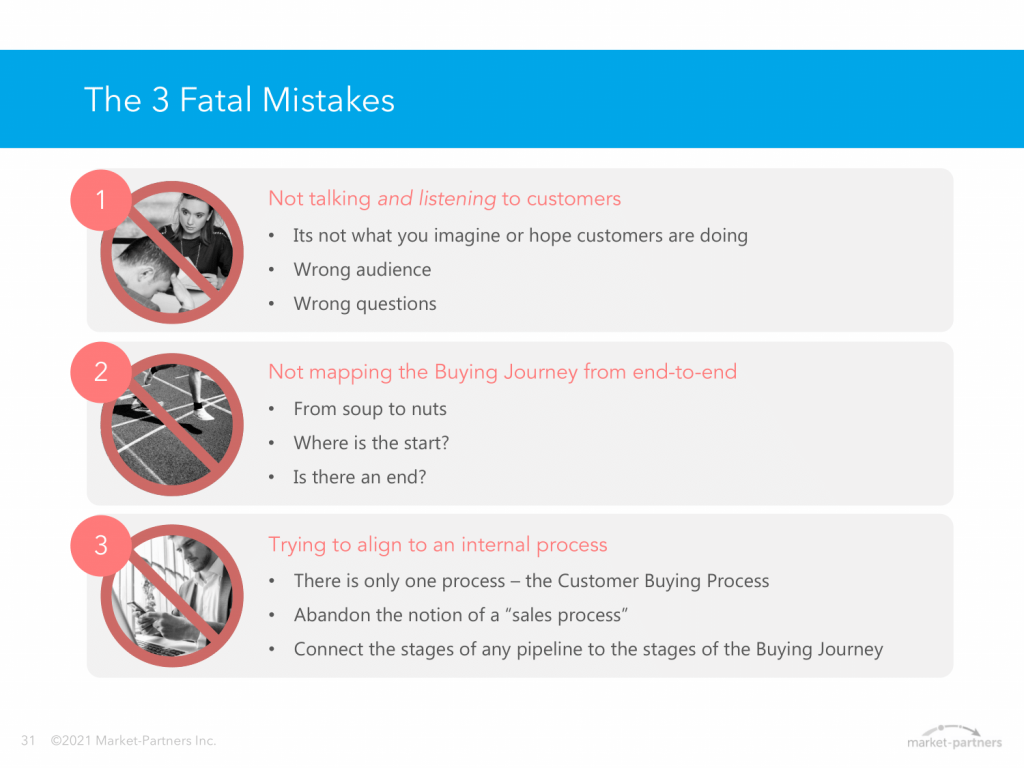
Case in point: the orthopedic surgery buying journey
After talking to customers about their journey in orthopedic surgery, we discovered that buyers try very hard not to buy. They don't want surgery, they want quality of life. Therefore, their journey starts with recurring pain or joint weakness, not a decision to explore surgery, and hopefully ends with a healthy joint. But how and when do they decide to have surgery and where to go?
The diagram below shows an overall buying journey for a joint replacement. The trigger is just having a pain in your joints. After you become aware of the pain, you start to explore various options like non-surgery therapy, acupuncture, physiotherapy. When nothing works, you begin to consider surgery. You decide to have the surgery, followed by a period of rehabilitation, and then you get on with life.
Within this buying process, there are loops when people try to avoid having surgery and keep returning to explore non-surgery options.
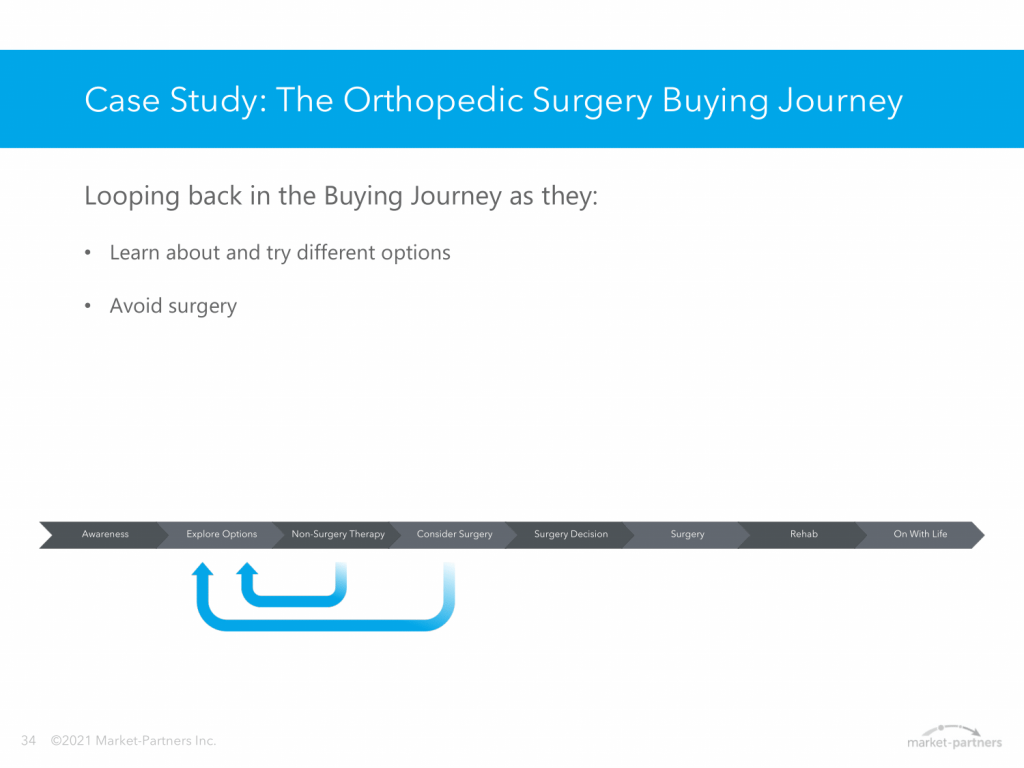
So, what happens in that buying journey to make somebody decide to have surgery? Using UXPressia’s tools, we mapped this out.
Pro tip
For every buying journey we map, we use at least two independent researchers. Each of our consultants independently map out the customer buying journey, and then we bring them together. If we get the same results from two or three independent consultants, we know we've got a fairly robust picture. But in case of differences, we start exploring them and often find valuable insights.
After mapping the journey, we discovered that a tipping point is a personal recommendation. For example, somebody who's been putting off surgery for years meets with a neighbor who happens to have the surgery and now recommends the doctor.
Managing the buyer journey
Our goal is not only to give customers what they want when they want it. We need to support and navigate them through their buying journey while positively influencing the process to make customers happy so that they come back and recommend us to others.
5 elements of the market engagement strategy
Now, let’s have a closer look at the market engagement strategy.
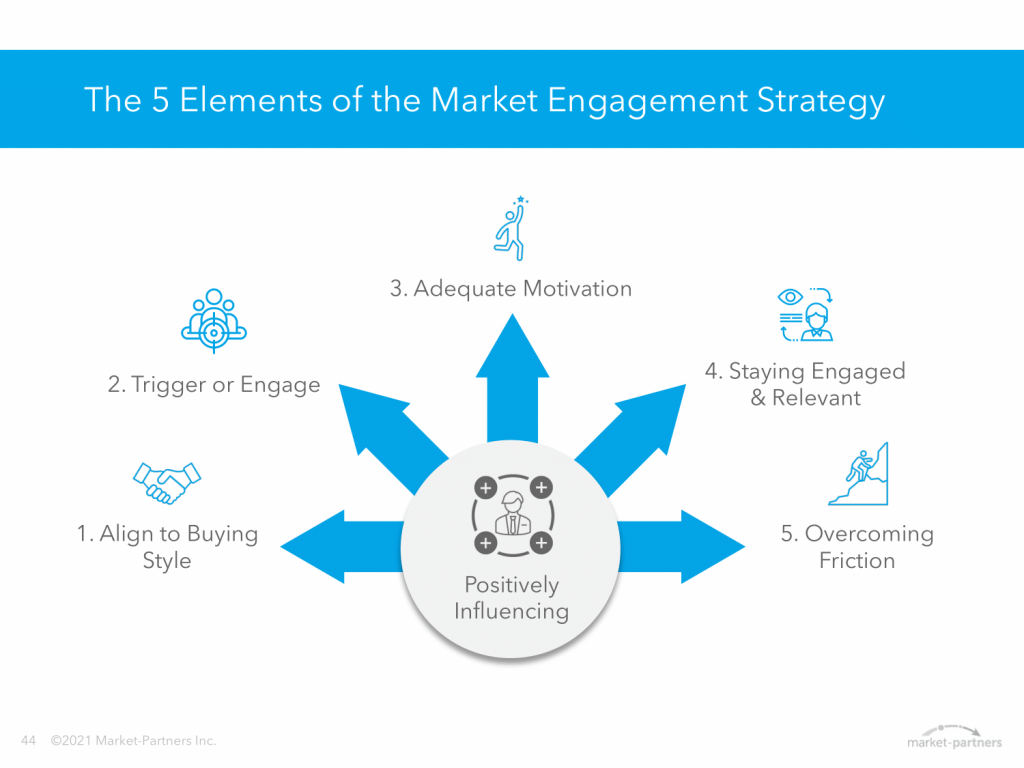
- Align to the buying style
First, pick the quadrant you want to operate in and then look at how to move buyers into that quadrant. And if you can't, you don't do business with them. Once you have decided on the buying style, optimize the entire company around that approach.
- Trigger or engage
You need to decide if you are going to try and trigger a buying journey or to engage in a buying journey. And if so, when and how?
- Adequate motivation
How are you going to provide adequate motivation so that your buyer continues to go through the buying journey? It’s essential to make sure that your marketing, sales, UX/CX teams are all aligned to customers' values.
- Staying engaged and relevant
One of the big issues in buying journeys is that a salesperson thinks they're closing the deal while a customer thinks they're just starting. A customer still needs to get an internal alignment, think through implementation issues, change management concerns, etc. Those are all the things that you want to be engaged in, aligned with, and provide value.
- Overcoming friction
It’s more important to overcome friction than to emphasize value. Companies often think that their product is fantastic and their passion for the product will get customers to buy it. The truth is it won’t. You need to overcome friction for this to happen.
Key takeaways
- It’s a buyer-centric world. We have moved from the sales to the buying process.
- Flip the focus to outside-in. As buyers are now more disconnected and independent, we need to understand what they do. And for that, we have to move from why someone should buy to how they buy and why they don’t.
- The success formula:
- Map the customer buying journey in detail. Engage independent researchers, if necessary. Make sure you have a robust understanding of the buying journey.
- Develop the market engagement strategy — it's how the company is going to engage in its marketplace.
- Manage the customer buying journey and ensure you bring value at each step of the journey.
